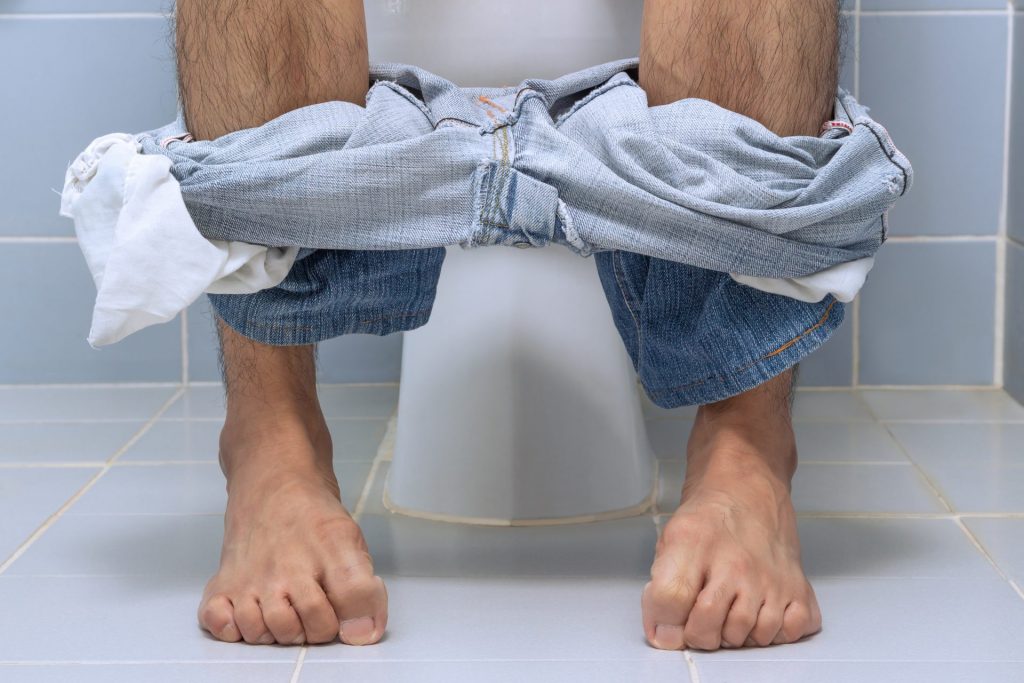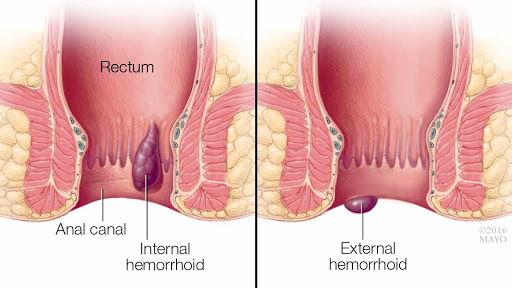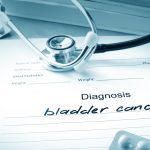Have you ever felt a swollen part around your anus and rectum? The high chances are that you are suffering from Hemorrhoids.[1]

What are Hemorrhoids?
Hemorrhoids refer to the swollen veins across the lower rectum and anus.[2] More than 50% of adults over the age of 50 years suffer from Hemorrhoids. These are either external or internal. The internal hemorrhoids develop in the internal areas of anus or rectum while the external one is situated on the outer side of the rectum.
The hemorrhoids also referred to as piles, are often compared to internal piles.[3] The external piles cause the most trouble due to itching, sitting, and pain. However, these are not severe and can be easily treated.
It is necessary to get hemorrhoids treated as soon as possible. The lengthened time will only increase the pain and discomfort around the area.
Few Facts about hemorrhoids:
- Compared to men, women are more prone to hemorrhoids during pregnancy.
- Medicines and surgery can help treat hemorrhoids.
- Enlarged anal veins lead to increased risk of hemorrhoids.
- Older adults are the most prone to developing the risk of hemorrhoids.
Symptoms
As discomfort increases, the symptoms of hemorrhoids become more predominant.[4] Some of the noticeable symptoms of hemorrhoids include the following.
- Increased itching around anal regions.
- Fecal leakage.
- Discomfort and pain around the anal region.
- Painful bowel movement.
- Bloody discharge in feces.
Hemorrhoids are painful but not life-threatening. However, with proper treatment, these are likely to go away after some time.[5] But hemorrhoids can be recurring as it increases the risk of developing anemia. Most people suffer from severe symptoms such as excessive blood loss, weakness, and pale skin. However, these are very rare to occur.
Causes
Although there is no proper evidence about the exact cause of hemorrhoids, some of the possible causes include the following.
- Loose bowel movements
- Chronic constipation leading to severe problems
- Family history
- The prolonged period of sitting
Diagnosis
The easiest way to diagnose hemorrhoids is to conduct a visual examination of the anus. Based on your symptoms and possible causes, the doctor will conduct a digital rectal examination.[6] The doctor may carry out sigmoidoscopy to detect unusual swelling around the anal region.
In sigmoidoscopy, the doctor will use a small fiber-optic camera (sigmoidoscope) to detect internal hemorrhoids. The camera helps to get a clear view of the rectum, thereby helping to analyze hemorrhoids’ presence.[7]
Complications
- Hemorrhoid may bring about several complications associated with it such as
- Swollen blood clot around the veins
- Excessive bleeding from anus and rectum
- Iron deficiency paves the way for blood loss

Treatment
Based on the severity of your condition, you may either go to a doctor or treat it yourself by following home remedies.[8] Some of the best treatments for hemorrhoids include the following.
- Pain Relief
Since hemorrhoids can be extremely painful, soak the area with a tub of warm water. This can help ease the pain of external hemorrhoids.[9] Over the counter medicines and ointments can be helpful as well to relieve the itching and burning. You need to purchase proper medicine from the store to find out the best solution.
- Fiber Supplements
Doctors, over time, have recommended fiber supplements to help treat hemorrhoids. One of the main reasons why people suffer from hemorrhoids is because of the appearance of hard stools. However, these fiber supplements play an essential role in softening the stools. The psyllium and methylcellulose fiber supplements can help ease the symptoms of hemorrhoids or piles.
Home Remedies
Once you start noticing the symptoms of piles, you can follow certain home remedies to ease the symptoms.
- Apply ice packs and cold compresses: Ice packs and cold compresses can help ease pain and discomfort around the area.
- Moistened towels: The application of moist towels comforts the area. Often people use dry toilet paper to clean themselves. These only increase the problem.
- Apply analgesics: If you have been facing excessive pain and discomfort, you can prefer using painkillers containing ibuprofen, acetaminophen, and aspirin.
- Get hold of a sitz bath: These sitz baths are usually found in pharmacies and placed over the toilet. This helps lower burning and itching symptoms.
Non-surgical methods
Rubber band ligation is one of the most prominent and effective non-surgical methods for treating hemorrhoids.[10] In this process, a rubber band is tied over the base of hemorrhoids to reduce blood supply. With time, either hemorrhoid will shrink in size or fall off.
Sclerotherapy is yet another prominent method of treating internal hemorrhoids. A scar is put up on internal hemorrhoids to prevent blood supply.[11] If the condition is severe, the doctor will recommend treatment like electrocoagulation and infrared photocoagulation.
Surgical option
If your condition is too secure, the doctor will recommend conducting hemorrhoidectomy. Apart from that, the doctor may also conduct stapling to prevent the prolapsed hemorrhoid from going.
To undergo any of these surgeries, the doctor will put you under anesthesia. However, you may not need to stay in the hospital if you have had a mild surgery.[12]
How to prevent hemorrhoids?
Smaller changes in lifestyle can play an essential role in preventing hemorrhoids. Some of the prominent ones include the following
- Provide a significant boost in physical activity.
- Don’t take too much stress.
- Go to the toilet whenever required.
- Maintain the nutritional capacity of the body.
Hemorrhoids can be easily treated should there be no complications to worry about. The treatment needs to be started from the early stage, depending on the seriousness to avoid anemia and blood clots.
[1] https://www.ncbi.nlm.nih.gov/pmc/articles/PMC4755769/
[2] https://www.ncbi.nlm.nih.gov/pmc/articles/PMC3342598/
[3] Loder PB, Kamm MA, Nicholls RJ, Phillips RK. Haemorrhoids: pathology, pathophysiology and aetiology. Br J Surg. 1994;81:946–954. [PubMed] [Google Scholar]
[4] Morgado PJ, Suárez JA, Gómez LG, Morgado PJ. Histoclinical basis for a new classification of hemorrhoidal disease. Dis Colon Rectum. 1988;31:474–480. [PubMed] [Google Scholar]
[5] https://www.ncbi.nlm.nih.gov/books/NBK537182/
[6] Thomson WH. The nature of haemorrhoids. Br J Surg. 1975;62:542–552. [PubMed] [Google Scholar]
[7] https://pubmed.ncbi.nlm.nih.gov/29431977/
[8] Lunniss PJ, Mann CV. Classification of internal haemorrhoids: a discussion paper. Colorectal Dis. 2004;6:226–232. [PubMed] [Google Scholar]
[9] https://www.ncbi.nlm.nih.gov/books/NBK500009/
[10] https://www.ncbi.nlm.nih.gov/pmc/articles/PMC4541377/
[11] Acheson AG, Scholefield JH. Management of haemorrhoids. BMJ. 2008;336:380–383. [PMC free article] [PubMed] [Google Scholar]
[12] Kaidar-Person O, Person B, Wexner SD. Hemorrhoidal disease: A comprehensive review. J Am Coll Surg. 2007;204:102–117. [PubMed] [Google Scholar]

